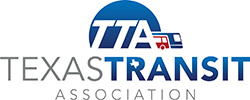Title VI

Notifying the Public of Rights Under Title VI
The Texas Transit Association
- The Texas Transit Association, TTA operates its programs and services without regard to race, color, and national origin in accordance with Title VI of the Civil Rights Act. Any person who believes she or he has been aggrieved by any unlawful discriminatory practice under Title VI may file a complaint with the Texas Transit Association.
- For more information on TTA’s civil rights program, the procedures to file a complaint, or
to file a complaint contact 512-900-0550, email info@txtransit.org.; or visit our website
at www.txtransit.org. - A complaint may also be filed directly with the:Texas Department of Transportation, Attn: TxDOT-PTN, 125 E. 11th Street, Austin, TX
78701-2483, orFederal Transit Administration, Office of Civil Rights, Attention: Title VI Program
Coordinator, East Building, 5th Floor-TCR, 1200 New Jersey Ave., SE Washington, DC,
20590. - If information is needed in another language, contact (800) 752-6096
- Si necesita información en otro idioma contacte (800) 752-6096